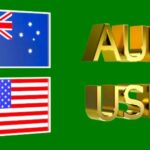Japanese yen has reached a new 38 year high of 161.91.
The Japanese yen (JPY) fell against the US dollar (USD) on Wednesday. The USDJPY pair has reached a fresh high of 161.91, a level not seen since 1986. This increase could be related to final data showing that Japan’s business activity contracted in June. Market players are concerned about the likelihood of the Bank of Japan (BoJ) intervening in foreign exchange (FX) markets, which would strengthen the JPY and limit the pair’s upside.
Japan’s 10-year government bond yield reached an almost 13-year high of 1.11%.
Japan’s 10-year The government bond yield has risen to an almost 13-year high of 1.11%. Traders continue to assess the Bank of Japan’s monetary policy outlook in the face of a steeply weakening Japanese yen, which raises import costs and adds to inflationary pressures. According to Reuters, citing two government sources, the Japan Ministry of Finance is considering introducing a new type of floating-rate bond to help investors manage the risks associated with rising bond yields. This decision comes as Japanese policymakers brace for further rate hikes by the Bank of Japan.
The US dollar is rising due to a recovery in the yield on a 2-year Treasury bond.
The US Dollar (USD) has extended its losing trend, presumably due to dovish statements from Federal Reserve (Fed) officials. The Greenback may restrict its fall if US Treasury yields improve, with 2-year and 10-year Treasury bonds standing at 4.75%.4.43% at the time of writing. Traders are waiting for the US ADP Employment Change, the June ISM Services PMI, and the FOMC Minutes, which are due out on Wednesday.
Daily Market Movers: Japanese Yen falls due to weaker Services PMI.
Jibun Bank Japan Services PMI was revised down to 49.4 in June from 49.8 in May. This is a reversal of May’s 53.8 and the first fall in services activity since August 2022.
On Tuesday, Federal Reserve Chair Jerome Powell signaled a minor dovish shift. Powell stated that the Fed is returning to a disinflationary course. Powell, however, wants to see more evidence before decreasing interest rates, since the US economy and labor market remain robust, according to Reuters.
Federal Reserve Bank President Austan Goolsbee noted, “I see some warning signs that the real economy is weakening.
In an interview with CNBC Federal Reserve Bank President Austan Goolsbee noted, “I see some warning signs that the real economy is weakening.” Goolsbee also indicated that progress toward the Fed’s 2% inflation target may accelerate faster than expected.
On Tuesday, Philip Wee, Senior FX strategist at DBS, said, “The better-than-expected Tankan Survey in June should maintain optimism for a potential second interest rate hike and offer further insights into the plan to scale back JGB purchases at the upcoming Bank of Japan meeting on July 30-31.” Japan’s Tankan Large Manufacturing Index increased to 13 in the second quarter, up from 11 in the previous quarter, marking the highest level in two years amid an improving economic outlook.
According to Reuters survey conducted from June 25 to July 1, the Bank of Japan plans to lower monthly bond purchases by approximately $100 billion (¥16.00 trillion) in the first year of its quantitative tightening (QT) strategy, which will be released this month. This modification will reduce monthly purchases to around ¥4.65 trillion, from the current rate of nearly ¥6.00 trillion. In the second year, survey respondents anticipate further declines with monthly purchases averaging roughly ¥3.55 trillion.
Japanese Finance Minister Shunichi Suzuki indicated on Tuesday that he is “closely watching FX moves with vigilance.” Suzuki declined to comment on specific FX levels, saying the government’s policy on foreign exchange has not changed, according to Reuters.
On Monday, OCBC strategist Frances Cheung Christopher Wong added that “Japanese yen continued to trade near recent highs. This is also around the peak level since 1986. There are predictions that Japanese authorities will interfere soon. While the Japanese yen level is one thing to examine, officials are also concerned with the rate of depreciation, as the goal of the intervention is to reduce excessive volatility.”









